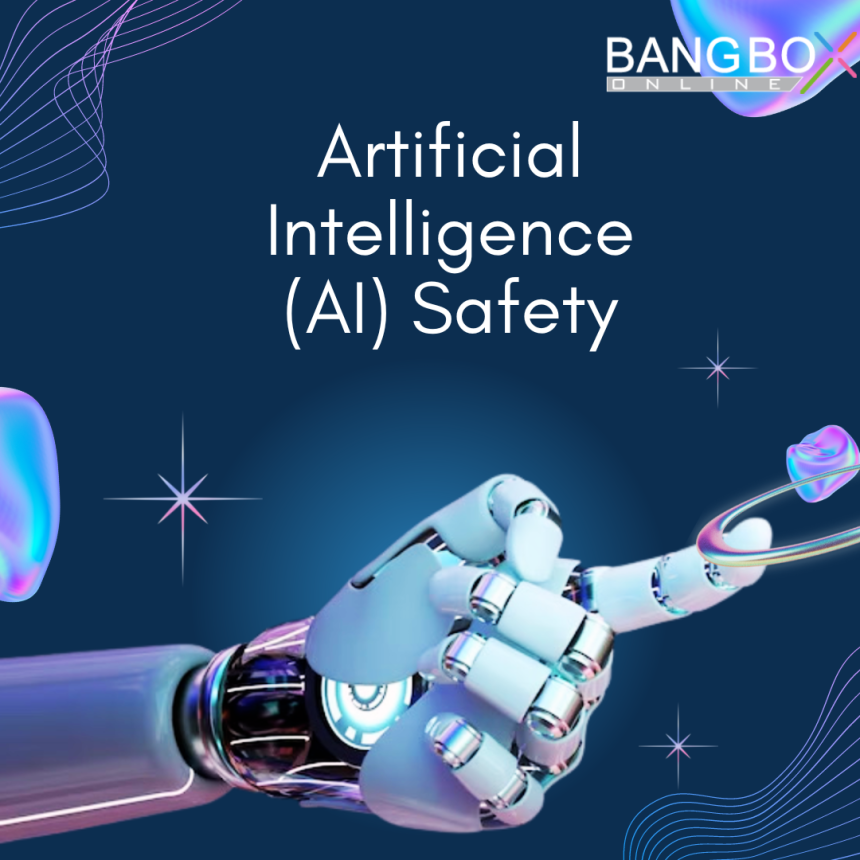
Artificial Intelligence (AI) Safety
Ensuring Ethical and Secure AI Development
2024-08-24 14:17:55 - All Trendy
As artificial intelligence (AI) continues to evolve and integrate into various aspects of our lives, the importance of AI safety has become a critical topic of discussion. The rapid advancement of AI technologies brings tremendous potential for innovation, but it also raises significant concerns about the ethical implications and security risks associated with these systems. Ensuring AI safety is essential not only to prevent harm but also to foster trust in AI systems among the public and across industries.
Understanding AI Safety
AI safety refers to the development and deployment of AI systems in a manner that minimizes risks and prevents unintended consequences. These risks can include anything from technical malfunctions to ethical dilemmas and even existential threats. The goal of AI safety is to create AI systems that operate as intended, are robust against failures, and align with human values and societal norms.
AI safety encompasses several key aspects:
- Robustness and Reliability: Ensuring that AI systems perform consistently and accurately, even in unexpected or challenging situations, is crucial. This involves rigorous testing, validation, and continuous monitoring of AI systems to detect and correct any issues before they cause harm.
- Ethical Considerations: AI systems must be designed and used in ways that respect human rights and ethical principles. This includes preventing AI from perpetuating biases, ensuring fairness in decision-making, and safeguarding privacy.
- Transparency and Explainability: AI systems should be transparent in their operations, allowing users and stakeholders to understand how decisions are made. Explainability is important for building trust, as it enables people to comprehend the reasoning behind AI-generated outcomes.
- Security and Privacy: Protecting AI systems from malicious attacks and ensuring that they do not compromise the privacy of individuals is critical. As AI systems often handle sensitive data, robust security measures must be in place to prevent unauthorized access and data breaches.
- Alignment with Human Values: AI systems should be aligned with human values and societal goals. This involves ensuring that AI behaviors and outcomes are consistent with ethical standards and do not conflict with the well-being of individuals or communities.
Challenges in AI Safety
Despite the best intentions, achieving AI safety presents several challenges:
- Complexity and Unpredictability: AI systems, especially those based on machine learning, can exhibit complex and unpredictable behaviors. Ensuring that these systems behave safely in all possible scenarios is a significant technical challenge.
- Bias and Fairness: AI systems can inherit biases from the data they are trained on, leading to unfair outcomes. Addressing these biases requires careful data curation, algorithmic fairness techniques, and ongoing monitoring.
- Security Vulnerabilities: AI systems can be susceptible to adversarial attacks, where malicious actors manipulate inputs to cause incorrect or harmful outputs. Strengthening the security of AI systems is an ongoing concern.
- Ethical Dilemmas: The use of AI in areas such as surveillance, autonomous weapons, and decision-making in healthcare and justice raises ethical questions. Balancing innovation with ethical responsibility is a complex task.
Strategies for Ensuring AI Safety
To address these challenges, several strategies have been proposed:
- Interdisciplinary Collaboration: Ensuring AI safety requires collaboration between technologists, ethicists, policymakers, and other stakeholders. This interdisciplinary approach can help identify and address potential risks from multiple perspectives.
- Regulation and Standards: Governments and international organizations are working to develop regulations and standards for AI safety. These frameworks can provide guidelines for the ethical development and use of AI systems.
- Transparency Initiatives: Encouraging transparency in AI development, including open-source practices and clear documentation, can help ensure that AI systems are accountable and trustworthy.
- Ongoing Research and Development: Continuous research into AI safety, including the development of new methods for robustness, fairness, and security, is essential to keep pace with the rapidly evolving AI landscape.
The Future of AI Safety
As AI becomes increasingly integrated into critical areas such as healthcare, finance, and transportation, the importance of AI safety will only grow. Future developments in AI safety will likely focus on enhancing the robustness of AI systems, improving their explainability, and ensuring that ethical considerations are at the forefront of AI development.
Moreover, as AI systems become more autonomous, the need for comprehensive safety measures will become even more pressing. Ensuring that AI systems align with human values and operate securely and ethically will be key to realizing the full potential of AI while minimizing risks.
In conclusion, AI safety is a multifaceted challenge that requires a proactive and collaborative approach. By prioritizing robustness, ethics, transparency, security, and alignment with human values, we can create AI systems that are not only powerful but also safe and trustworthy. The journey towards AI safety is ongoing, and it is one that will shape the future of technology and society.
For more information make sure to follow us on:
Platform
https://www.bangboxonline.com/
News
https://news.bangboxonline.com/
Blogs
https://blogs.bangboxonline.com/
Fans
https://fans.bangboxonline.com/
Instagram
ihttps://www.instagram.com/bangboxonline/
Facebook
